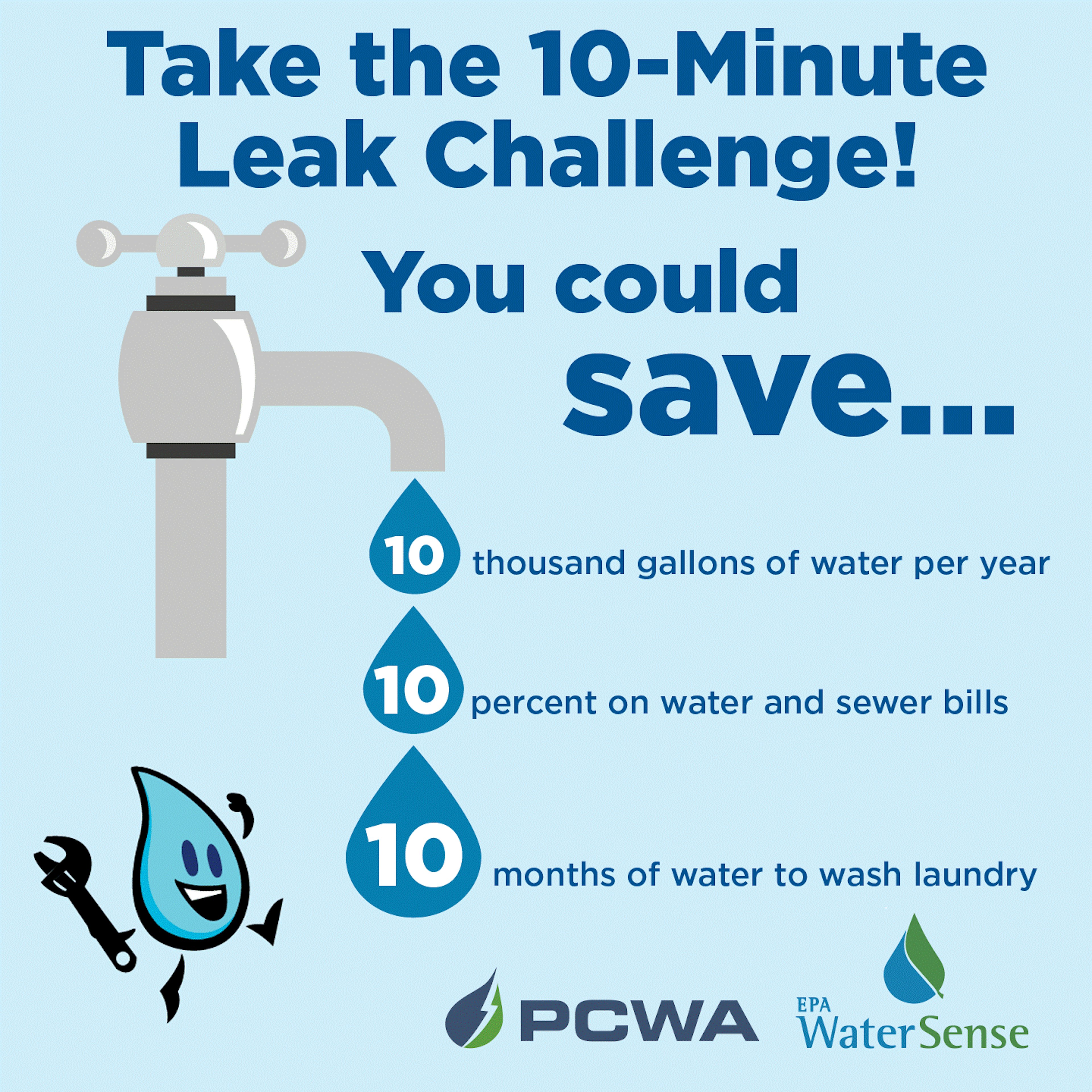Smart Water Use
How to Spot the Most Common Household Leaks
Household leaks are more common than people think. Many occur quietly and out of sight—in bathrooms, underground lines, or sprinkler systems.
The good news: many leaks can be found with quick checks you can do yourself. Knowing where leaks tend to occur and what signs to look for can help you solve problems early and prevent water from being wasted.
Below are the five household leaks PCWA sees most often and steps to help you find and fix them.
The Top 5 Household Leaks
1. Toilets
A leaking or running toilet is the most common indoor leak. A single toilet leak can waste 200 gallons per day—the same as running seven loads of laundry every day for a month.
4 Easy Steps to Check for a Toilet Leak
- Look and listen: After the toilet hasn’t been used, notice any faint trickling sounds or ripples in the bowl.
- Do the dye test: Add a few drops of food coloring (or a dye tab) to the tank and wait 10-15 minutes without flushing.
- Check the bowl: If the color appears in the bowl, you’ve got a leak—usually a worn flapper or valve.
- Fix it fast: Turn off the water supply, flush to empty the tank, and replace the flapper or valve. Bring the old part to the hardware store to find a match.
Helpful Videos*
- Detecting and fixing a leaky toilet (Regional Water Providers Consortium)
Replace your leaky toilet flapper (WaterSense)

2. Pool Supply Line & Pool Autofill Systems
Pool leaks often hide behind an autofill system that keeps topping off the water level.
How to check: Turn off the autofill and mark the waterline. If the level drops more than normal evaporation in 24 hours, you may have a leak.
Fix: A pool technician can pressure-test lines and repair valves or fittings.
3. Mainline to the House
This is the buried pipe that brings water from your meter to your home.
How to check: Turn off all indoor and outdoor water. If the meter’s flow indicator is moving, water is flowing somewhere in the system.
Fix: A licensed plumber can locate and repair underground leaks.

4. Sprinkler System Leaks
A small leak in an irrigation line can waste 6,300 gallons per month.
How to check: Turn on each irrigation zone manually and walk the yard. Look for pooling water, bubbling heads, or unusually wet spots.
Fix: Replace damaged heads, repair lines, and tighten fittings.

5. Mainline to Irrigation Valves
Leaks can also occur before water reaches your sprinkler system—often underground and out of sight.
How to check: Run your irrigation system and watch the water meter. Turn the irrigation off and check again. If the meter keeps moving, the leak may be between the meter and the valves.
Fix: A landscape contractor or plumber can pinpoint the problem.
Helpful Videos*
* The instructional videos listed provide general guidelines. PCWA is not responsible for any damage to your home, landscape, or appliances from following the procedures in these videos.
Did you know?
According to the U.S. Environmental Protection Agency, 10% of homes have leaks that waste 90+ gallons every day—enough to fill 1,440 glasses of water.
Helpful Tips
Shut off the water: Use the fixture valve or the main shutoff until the repair is done.
Check for rebates: Up to $1,000 for homes and $2,000 for businesses.
Call a pro if needed: Plumbers, landscape contractors, and pool techs can help find and fix tough leaks.
Choose WaterSense® products: They use at least 20% less water without losing performance.


Take the 10-Minute Leak Challenge
The average home wastes nearly 10,000 gallons of water per year from easy-to-fix household leaks; that’s equivalent to washing 300 loads of laundry (or enough to do laundry for 10 months)!
We're inviting everyone to take the 10-Minute Challenge to find and fix household leaks. It's easy! You could spend just 10 minutes walking your home checking for leaks. Or, you can do one thing each day from our list here.
